Stormwater runoff occurs when rain falls or snow melts on hard surfaces like roads, sidewalks, parking lots, driveways, and roofs and cannot soak into the ground, so it drains to storm sewers and eventually to lakes and rivers.
Why Manage Stormwater?
Stormwater runoff should be managed to protect the environment and your community, and reduce expensive property damage from:
- Flooding: Large storms can increase downstream flooding and damage your vehicles, homes, and roads, which will require costly repairs.
- Water pollution: Runoff picks up pollutants (sediment, oil, salt, pet waste, litter, fertilizer, etc.), which can cause unsafe swimming conditions, harmful algal blooms, poor drinking water quality, and stress on aquatic species.
- Erosion: Runoff increases stream volume and speed, which can increase streambank erosion to and result in costly damage to your homes, roads, and other infrastructure.
- Reduced groundwater: When water cannot infiltrate or soak into the ground, there is less in underground aquifers, which your community may depend on for drinking water.
- Warmer water temps: Runoff is heated as it flows across warm parking lots and roads, making the receiving waters warmer and harming sensitive species such as trout.
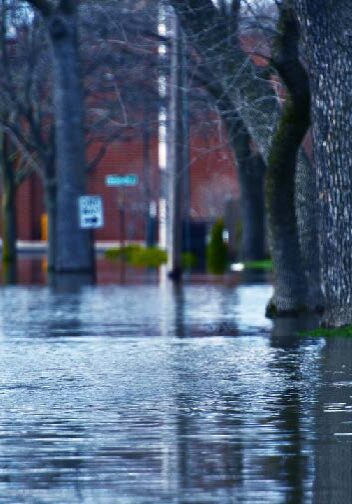
Green Stormwater Infrastructure
Green stormwater infrastructure or best management practices (BMPs) are the tools and strategies used to manage stormwater. Unlike typical gray infrastructure (gutters, pipes, culverts), green infrastructure mimics the natural water cycle and uses a combination of natural and engineered systems to capture the rain where it falls, reducing the flow to sewers and surface waters and increasing the quality and quantity of local water supplies.
Green infrastructure can be constructed faster than gray infrastructure and provides benefits beyond stormwater management, including:
- Cost savings from avoided flooding losses
- Increased property values
- Habitat for pollinators and other wildlife
- Aesthetic value in home and recreational spaces
- Improved air quality and public health from capturing greenhouse gases and air pollutants
Common Features of Stormwater BMPs
There are a variety of best management practices (BMPs), used to collect, filter, and release or infiltrate stormwater. Common features include:
- Inlet: Where water enters the practice, and often filters some sediment as the water flows in.
- Outlet: Where water leaves the practice once it reaches a certain level, if not infiltrated into the ground or released through evapotranspiration.
- Media mix: Mixture of soil, mulch, gravel, and rock used to filter stormwater and promote infiltration.
- Native vegetation: Plants used to slow and filter stormwater and provide aesthetic appeal.
- Underdrain: Drain beneath practice used to transport filtered water back to the storm sewer if it cannot soak into the ground.
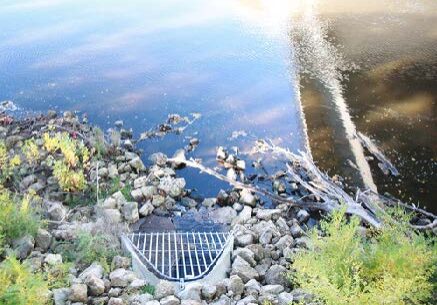
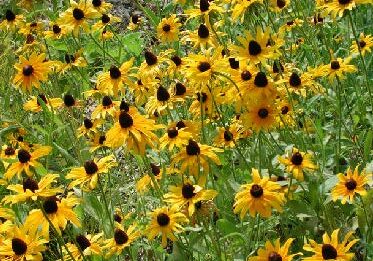
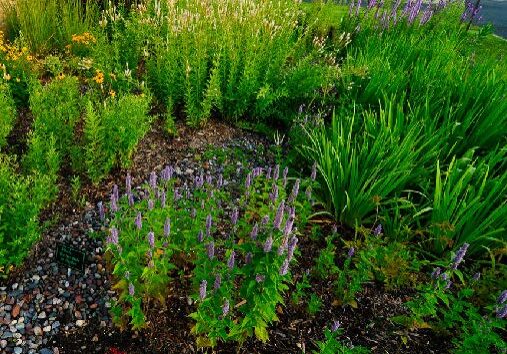
Common Stormwater BMPs
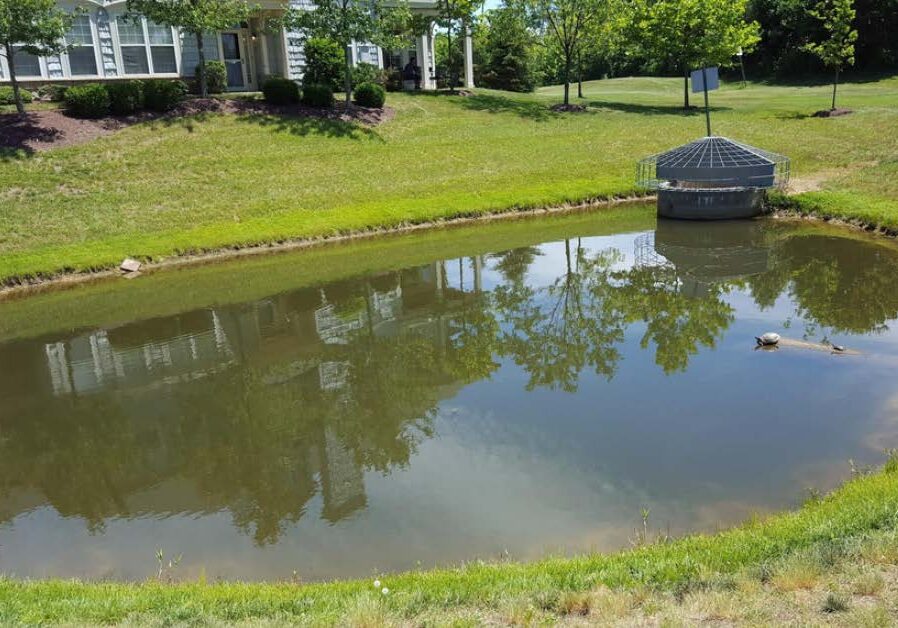
Wet Ponds
Features: Constructed basins, usually with an inlet, an outlet, and native vegetation that are designed to hold water permanently.
Purpose: To collect and store stormwater, allow sediment and other pollutants to settle out, and slowly release the water when levels exceed the outlet elevation.
Dry Ponds and Infiltration Basins
Features: Constructed basins, usually with an inlet, an outlet, a porous media mix, and native vegetation that are designed to be dry, except for after storm events. Dry ponds may also have an underdrain.
Purpose: To collect and hold stormwater for about 48-72 hours after a storm event. Infiltration basins replenish groundwater, while dry ponds are meant for storage and will release water through infiltration or an outlet or underdrain after filtering out pollutants.
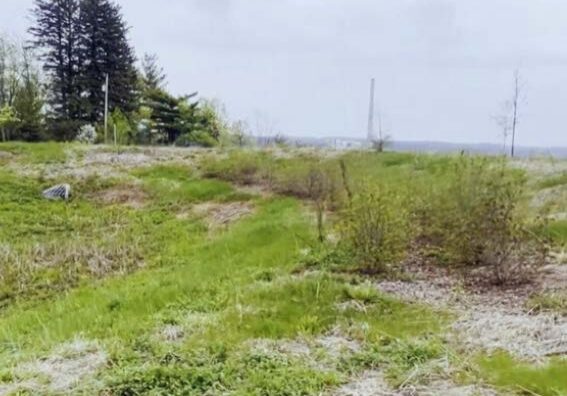
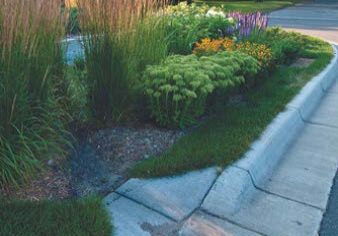
Raingardens
Features: Small, shallow constructed basins, usually with an inlet, a porous media mix, and water-tolerant native plants. They may also have an underdrain and an outlet for emergency overflow.
Purpose: To collect and filter rainwater before it infiltrates into the ground, evapotranspirates, or drains to the nearby sewer. They are built to hold water for up to 48 hours and provide water and nutrients to the plants.
Bioswales
Features: Shallow channel, usually with a porous media mix, and water-tolerant native plants. They may also have an inlet and an underdrain.
Purpose: To transport stormwater as well as to collect or slow, treat, and release or infiltrate stormwater, similar to a raingarden.
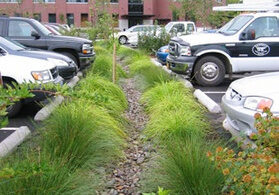
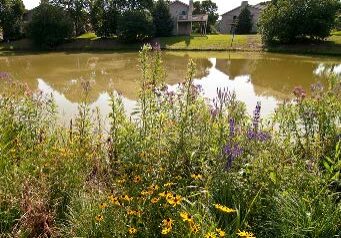
Vegetated Buffers
Features: Strips of dense native plants, ideally about 10 feet wide, that are preserved or planted between developed land and water bodies.
Purpose: To slow the flow of stormwater, collect pollutants and sediment, promote infiltration, and stabilize shorelines.
Tree Trenches
Features: Trenches with one or more trees, usually with an inlet and a porous media mix. They may have underground storage or an underdrain.
Purpose: To intercept rainfall in the tree canopy as well as collect, filter, and store, infiltrate, or release stormwater. The stormwater also promotes tree growth.
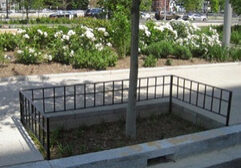
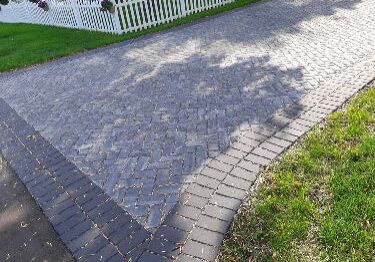
Permeable Pavement
Features: Hard surfaces made from asphalt, concrete, pavers, or a recycled material with gaps or holes to let water through to the soil.
Purpose: To provide a hard surface for walking, biking, driving, or parking and also allow stormwater to pass through the surface and into the ground.
